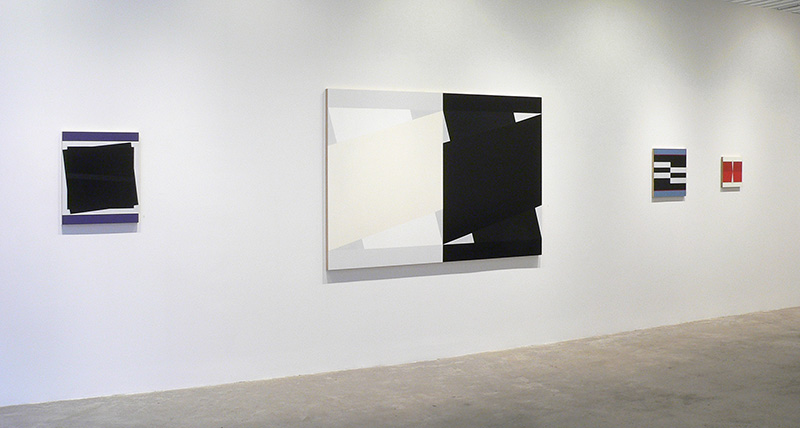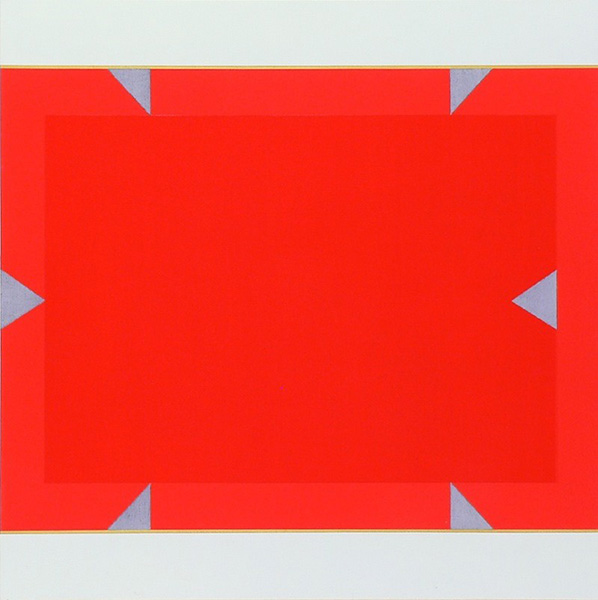
June 2017
Don Voisine Displays Strength and Fragility in Show at McKenzie Fine Art
Don Voisine
McKenzie Fine Art
New York, New York
May 5 – June 18
By David Ambrose
With his current exhibition at McKenzie Fine Art, Don Voisine (b. 1952) is clearly at the top of his game. I chose that distinctly American cliché to hammer home my point about the artist, his work, and his Acadian heritage. While the abstract artist has resided in New York since 1976, he hails from Fort Kent, Maine, a town at the very top of the United States whose name offers a warning to any unwanted advances from across our borders. It also comes with one conflicting and bafflingly historical fact: the most famous war fought at Fort Kent was a bloodless one. The 1838-1839 Aroostook War fought between the United Kingdom and the United States settled a border dispute between Maine and New Brunswick with regards to forest logging rights.
Voisine’s current exhibition of seventeen new oil paintings on wood panel were all made from 2015 – 2017. They range in size from small (12” x 12”) to much larger (53” X 80”). Each work is painted with care and a handcraft that feels like a form of colonial minimalism. Not because they are provincial in any way, but rather because they have harnessed the simple, immediate natural elements necessary in making a painting – a bit like settlers having to adapt to their landscape without the best tools, or knowledge of local flora and fauna. The works are spartan and reserved, with subtle shifts of surface texture and occasional blast of color. What you need for now, as well as what you will need to store up for later, are both present, with nothing decorative or superfluous to distract from the works' immediacy.The paintings are populated with elegant, rigorous forms working hard in (and on) their field.
While these paintings rely on an austere, reductive, geometric language, a dry sense of humor is also clearly at play. The first sign that things are not nearly as serious and somber as they might appear are the painting titles themselves, which comprise single and double word declarations like Stones River, Prog, Slates, Spoke, Slide and Umpire. Yet in each work, the purity of the surface of the picture plane asserts its dominion over attempts at illusion, but not, however, over allusion.
The largest, and to my eye the best work in the exhibition, Umpire (2017), a 53” x 80” panel, is divided in half -down the middle - like a grooved 3-0 fastball. This work, along with Slide (2017) and perhaps Skip (2017), an abbreviation for Skipper, seem to be tied to a baseball vernacular, as baseball is an outdoor summertime game intended to be played on a well manicured field of sharp angles and natural geometry. It is a distinctly American game beloved by analytical thinkers as a result of its mathematical resonance--both on the field of play and in the statistical memories of its fan base. In Umpire, the dominant, layered form is a symmetrical pair of crosses or X’s. On the left side, the form is painted off white over white. On the right side it is painted black, glossy over mat. The forms of each side bisect diagonally and manage to remain on balance; a bit like a pitcher painting both sides of the plate. The white of a baseball or home plate is measured against the black of the umpire’s chest protector. In the work, the diagonal forms appear to be changing planes, a technique used by pitchers to keep hitters off balance. Voisine pivots each of these larger crosses with eight, key-shaped triangles, or shims, in shades of gray and white, four to each half of the painting. The keys keep the viewer’s eye moving around the field or rounding the bases. The overlapping cross section reveals a diamond and is framed – as a catcher might frame a pitch- by horizontal bands of matching gray (left) or black (right) at the top and bottom of the strike zone.
Voisine uses two distinct linear units: straight line and edge, but with his line he applies width and chromatic weight. It’s like seeing glass from the side and having it cast an emerald green line from its depth and density. All of Voisine’s edges, on the other hand, are crisply tightened by tape and tend to be thin and flat and come with release points; the result of a slight buildup of paint layers at each intersection. The surface appears to rise ever so slightly with the removal of the tape and gives us an added sense of direction. On the horizontal axes of Slats (2017), the north side of the edge of each “slat” catches and reflects a thin line of light, while the south side hovers ever so slightly in shadow. The same can be said of Slats' vertical axes, with their equally subtle east and west light incidents.
Fourteen of the seventeen paintings in the show rely on black as their dominant compositional element. Voisine paints two types of black finishes: matte and gloss. Both blacks act as structural elements in the works here, and they come with architectural and spatial associations. The matte shapes are load-bearing and give the work structural integrity and a solid foundation. Conversely, the glossy black shapes, like a tinted glass, are reflective or light bearing; these sections invite the reflection of our space,along with our shadowy shape, into the painting’s space and onto its surface thus alluding to a shared humanity: his and ours.
While attempting to create perfectly balanced two dimensional spaces and compositions, Voisine’s work seems to extend an open hand to the bronze, steel, and glass sculptures of the late, great Christopher Wilmarth (1943-1987), whose work came with a beguiling combination of strength and fragility. For Voisine, his strength comes from the opacity of the painted shapes and fragility implied by the juggling planes, tightly wound compositions and pristine surfaces.
The work, at times, can move our thoughts off the land and onto the sea, as all of these paintings operate with a nautical precision: our eyes travel across a large smooth surface, not unlike a body of water. Alone on this ocean of black (Steady, 2017) or deep ultramarine blue (Stones River, 2017 and Skip, 2017), we travel across a surface of precisely brushed currents, looking for points of reference as we hoping for the jump in our hearts created by the excitement of spotting dry land and the knowledge of safe passage. In Enter (2017), that passage is provided by a white silhouette that seems to reference the bridge of a cruise ship nestled between two maroon smoke stacks of another ship. The two are separated by thin blue and gray lines that rope both vessels visually to the surface and into port. In Spoke (2017), gray triangles hang like signal pennants or sails and scatter to the perimeter, pivoting around the paintings periphery as if they were tasked by the central bright red shape.
But please forgive me if these rigorously formal paintings with their reliance, in most cases, on black, tape-lined hard edges and suffocating forms also make me smile. The work carries the dry, subtle, visual joke of asymmetry, craving balance from imbalance with its tilting, slipping, shifting planes that nudge us back from the pressure of our daily lives.
The work is a little like an unlocked door that is cracked open with a thin line of light seeping out from behind it--both welcoming and, at the same time, a little foreboding. Voisine was raised in a time where an unlocked door was a sign you trusted your neighbors, and not a sign that you should be worrying about encroaching Alzheimer’s. And who knows? Perhaps thirty years from now an unlocked door, both literally and figuratively (surveillance), will be required of all of us by the State.
Remember, Don Voisine comes to us originally from Fort Kent, Maine, the land of bloodless battles. And shouldn’t the “Fort of Knowledge” always leave its doors (or borders) unlocked for everyone? It’s the upper edge of America, where sometimes that very border, our line of demarcation, has been a little blurry. There is, however, nothing blurry about Voisine’s work. It’s assured, hardened, and steely. You’d expect that from a Mainer, but Voisine's paintings also display a wide range of human emotion, and there is nothing bloodless about that. And lucky for us on the east coast, those open doors allowed free and safe passage for Don Voisine and this beautiful new body of work.





